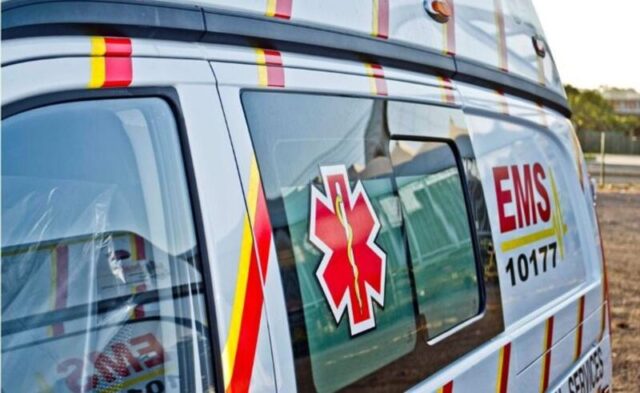The emergency vehicles will be monitoring major routes, strategic points and hotspots as part of accelerating a turnaround time for emergency medical response during the silly season.
THE Department of Health has bolstered the Emergency Medical Services (EMS) by deploying over 1,500 ambulances across the country to mitigate against the number of emergencies in the festive season period.
The emergency vehicles will be monitoring major routes, strategic points and hotspots as part of accelerating a turnaround time for emergency medical response during the silly season.
The department has also appealed for communities to keep medical personnel safe during the period.
Reports regarding attacks on health workers responding to emergencies have been rife in recent years.
According to the World Health Organisation (WHO), health workers are at high risk of violence all over the world.
Between 8% and 38% of health workers suffer physical violence at some point in their careers, according to the WHO statistics.
Department spokesperson Foster Mohale said the incidents could only be stopped if communities became protectors rather than by-standers.
“The department appeals to communities to join hands with government and law enforcement agencies during this period to create an enabling environment for front line healthcare workers, especially nurses and paramedics to perform their life-saving duties freely without fear of both verbal and physical violence and aggression.
“Violence against health workers is unacceptable because it does not only negatively impact on their psychological and physical well-being, but also affects their job motivation and has potential to compromise the quality of care and puts health-care provision at risk,” Mohale said.
He added that the EMS personnel played an essential role in the health system by providing timely and appropriate medical care to patients in need.
“They respond to emergencies to save lives and risk theirs. It is not possible to have the ambulances to be accompanied by police or armed private security, hence communities need to play a role to end attacks against paramedics and other health workers,” he said.
The 1,540 medical vehicles will be complemented by private sector ambulances as part of existing service level agreements entered with provinces to beef up EMS to ensure quick response to major accidents and to prevent avoidable loss of lives resulting from accidents according to Mohale.
Some of the major routes to be prioritised in provinces include Eastern Cape (N2,N10,R61, R72); Free State (N1, N3, N5, N6,N8); Gauteng (N1,N3, N4, N12, N17, R21, R59, R101); KwaZulu-Natal ( N2,N3, R56); Limpopo (N1,N11,R36, R37,R71,R101, R518, R524, R528, R579); Mpumalanga (N2, N3, N4, N11, N12, N17, R23, R38, R40, R573); North West (N4, N14, N12, N18, R30); Northern Cape (N1,N7,N8, N10, N12, N14, N18, R31, R382); and Western Cape (N1, N2, N7, R27, R62).
Mohale said some of the associated risks during the festive season include vehicle accidents, domestic violence, alcohol and substance abuse, and drowning.
He said all health facilities would remain open to enable South Africans to access health services during the period..
“In a life-threatening emergency, people are reminded to dial 112 from a landline or cellular phone and be aware that the call-centre agents will ask questions to enable them to dispatch an ambulance accordingly,” he said.
Pretoria News








